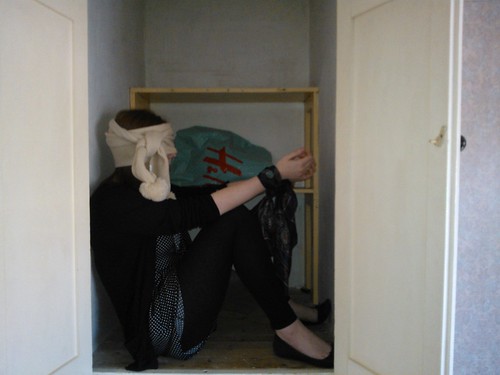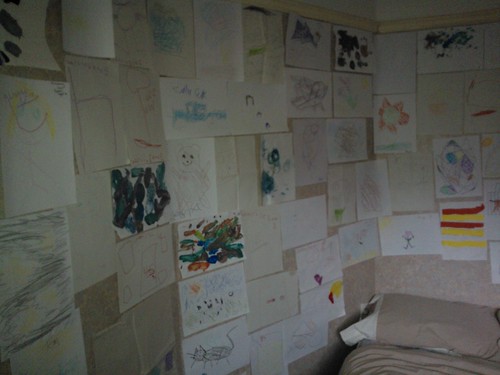There were a variety of different feelings running through me as we were packing up the house after our last performance. It has most definitely been an experience that I doubt I’m going to forget. There have been many different challenges with creating this performance. After working in the bedroom, and working with the other students who chose the bedroom, I feel proud. Especially of Lauren and Lauren, who had the exceptionally hard challenge of pushing the boundaries of their personal comfort whilst in the cupboard. However, they did it and I think the reactions that we received from the audience members indicated that the risks were worth it.
During my performances with Lauren W the reactions of the audience members ranged dramatically. Lauren faced people sitting there refusing to meet her eyes, people speaking in response to the narrative, and people bursting into tears. I found myself faced with people uncomfortable and tense in their blindfold, with some people who were chatty and relaxed in response to my narrative, and some people who seemed like they might actually fall to sleep. The varied emotions that were shown by the audience members, I think, showed that the four of us had created a strong piece that had the ability to affect people.
The performance itself was an interesting experience because you had to be alert at all times, and yet you could relax as well. It was disconcerting to be in the middle of a performance, knowing there were audience members in the house somewhere, when suddenly your lecturer pops into your room in his quest to avoid the audience, or when you would quickly nip into another room to pass on a message or ask a question. To be so aware of where the audience is in the house, but to also know that they’re not aware of you yet, because they hadn’t entered the little world you had created in the house was strange. Those things added an extra dimension to the performance when the audience members went into the cctv room and were able to watch you in the in-between moments between audience members.
During the creation process we all had our individual rooms to work on, so it was interesting to realise at the end of the final night how the rooms all fit together. How the living room comments on tv, and the waste of life, were twisted when the audience entered the cctv room. How in the kitchen the rabbit, and the impossibility of their task, linked to the bedroom with its bedtime story and the “going through the rabbit hole” concept of the cupboard. It was nice to see that whilst each room had its own specific purpose, they linked to create a whole experience.
At the end of the night it was also strange to think about where we started, to think that during the very first session Lauren W and I were sat together in a cupboard writing about our first impressions and memories. It thent became a tentative idea, using video and installation, about the connotations that surround the bedroom. Until it finally became the piece we presented, where we offered two separate experiences using ourselves as installation, or using our own memories and experiences to fuel a bedtime narrative. Thinking back on it, there are a few things that I would do differently. I think I would now be able to expand the narrative I used, I think that I would, and should, have made even more of a distinction between how I treated the voyeur and the ‘child’ audience. After all, Hindsight is a wonderful thing.

